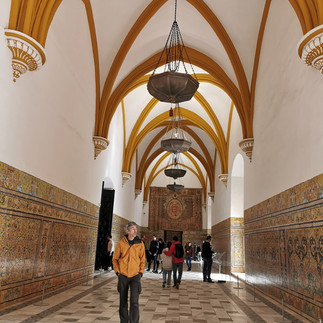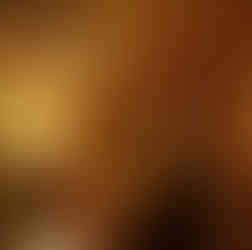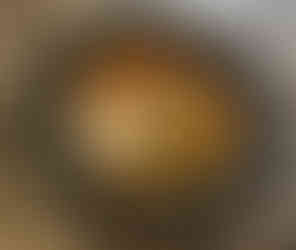48 hours in Seville in February; a lot of walking, seeing the landmarks, and eating!
- Sarah
- Mar 4, 2023
- 5 min read
I think that it's around 20 years since I was last in this beautiful Andalusian city, and oddly enough that was also a February break. It's not the most obvious time of year to visit, but with the daily temperature between 17c and 22c it's certainly a lot more comfortable for sightseeing than in the summertime when it gets extremely hot.
Getting to Seville old town from the airport
For the first time in ages we decided against hiring a car, partly as we were flying into Seville but out of Malaga, which rather limits the choice to the big hire companies. Instead the hotel arranged for us to be met at the arrivals gate and picked up, which made for a stress free experience. It cost €33 to the hotel in the midst of the old city centre through Welcome Pickups. There are also taxis on a rank, as well as buses, and Uber or Bolts.

Staying in Seville
We stayed at Casa de la Juderia, a 16th century (in parts) hotel consisting of 27 houses, and sprawling across a whole block, so sprawling in fact that the receptionist gives you a map to navigate the hotel. There's an underground passage in case it rains, luckily it didn't whilst we were there. Walking through the various plant-filled courtyards with pools and fountains and narrow passageways really felt like a trip back in time. The photos below give a feel for the place. There's also spa, and a roof top swimming pool which is a real sun trap.
Our room was characterful and quirky, as you'd expect from such an old building. But being on the ground floor it was noisy, as you could hear the laundry and luggage being moved across the flagstones and cobbles from 8 a.m. onwards. If I were to stay here again, I'd request a 1st or 2nd floor room.
Sight-seeing in Seville
Photos above: The narrow streets of Old Town Seville, churches with grand entrances, Torre Del Oro, and Cathedral Giralda.
We arrived early afternoon, so dumped our bags at the hotel and set off for a wander and to orientate ourselves. The old part of the city is full of narrow streets, numerous churches, tapas bars, coffee shops, ice-cream bars and shops selling souvenirs of varying quality. There are also some very serious dress shops selling Flamenco dancing dresses, and if you're lucky you may see a woman or child being fitted for one. There are several places to see shows, and these will be some of the best in Spain. Ask your concierge for a recommendation.
The following day we set off for the Alcazar, one of Seville's 'must do' historic sights. We hadn't booked in advance, so had to queue for tickets for around 20 minutes. Tickets cost €13 per adult. You have to present your passport to buy tickets - so don't come without yours! Given that this was low-season, I'd say that booking in advance would be highly advisable for busier times of the year.
Started by the Moors, the beauty of Islamic patterns, design, and gardens are everywhere. Sometimes altered by the Castilian royalty to reflect the new Christian order, the earlier designs still shine through. The changes to the palace don't follow in any prescribed order as you walk around. So it's best to just take your time, look up at the beautiful ceilings, enjoy the tranquil gardens and maybe see the Sevile oranges being harvested. We think that the school party enjoyed the duck rather more than the history and architecture!
Eating and drinking in Seville
The beauty of travelling off season is that it wasn't heaving with tourists, and it was easy to suss out where the locals were eating and drinking. We popped into Bodega el Picadero (the one we visited was 'The Sandy' at Calle Almansa, 14, Seville) where the locals were sipping sherry from the casks and large jamons hung from the ceiling, you couldn't really ask for anything more authentic.
We had a drink in the piano bar in the hotel before setting off for dinner. This was a set of 6 interconnected rooms, allowing for either sociable space or a romantic and intimate setting. The actual bar is a bit hidden, so there are bells on the tables to ring for the waiter. The bar is open to non-residents, and the drinks are reasonably priced; it's certainly worth a visit to feel like a Lord or Lady, even if it's just for an hour or two. We found ourselves sitting next to Giles and Mary from Gogglebox and their daughter, but I can't promise that they'll still be there!

Dinner had been pre-booked at Az Zait, a Michelin guide listed restaurant, which was about a 20 minute walk from the hotel. It was Valentine's day that day, and I did wonder if maybe it'd be full of couples, but it was a nice mix of couples and groups of friends. We loved the mural behind Alex, but I couldn't work out if it was depicting a story from mythology or a murder scene. Please comment if you can work out if it's a mask or a severed head to the left of Alex!
From top left: a play on patatas bravas, the mango amuse bouche, prawn carpaccio, Salmorejo, grilled scallops with Romanesco sauce, lamb with couscous, the cheese trolley, and the chocolate and orange dessert.
There's a choice between the a la carte menu and several fixed price ones, which represent excellent value for this level of cooking. We chose the mid-range one at €44; it was full of little surprises, with dishes looking like one thing, but being made of another food. The amuse bouche which looked like a comfit egg was actually mango. The biggest surprise of all was the popping candy on the Salmorejo - a dish which made us laugh with joy. The only dish which needed a little more oomph was the braised lamb on couscous with a date on top, it needed more of the sticky date and more seasoning. The menus do change, so please treat our photos as an indication of what to expect.
After our walk around the Alcazar we fancied a more traditional tapas, and popped into Casa Placido. Where we enjoyed a dish with 3 different types of croquettes; potato and cheese, spinach, and ham béchamel, a local speciality of spinach and chickpeas, and a slice of perfectly cooked Spanish omelette. The décor in here reflects everything Spanish religion, matadors, flamenco dancers, and of course there are jamons hanging from the ceiling!
Photos from Casa Placido.
For a modern take on tapas we booked a table at the very popular Castizo, even in February people who hadn't booked had to wait at the bar or stand and wait for a table to become free. Dishes ranged between 5 to 15 euros. The food here was as imaginative as it was delicious - highly recommended.
From top left: Fried artichoke with whiskey sauce, Sanlúcar potato dressing with fried glass prawns, baby squid in its ink with encominada carrot and crispy rice, Iberian cheeks in red wine with pickled onions .
Whether you are looking for fine dining, modern Spanish cooking, or something more rustic, Seville won't disappoint.
It was a fun 48 hours, but now it was time to hop on a bus to Ronda where were meeting friends, and had a 3 star Michelin meal to look forward to, as well as a re-visit to that stunning topography.
















































































